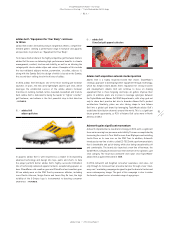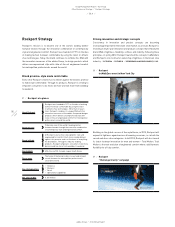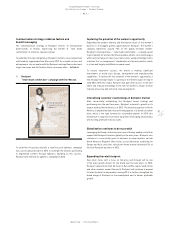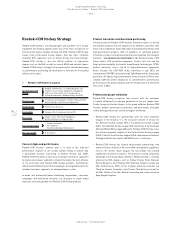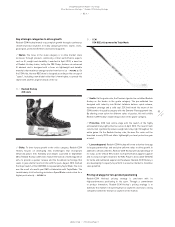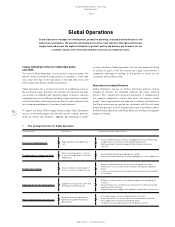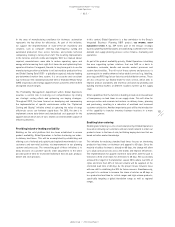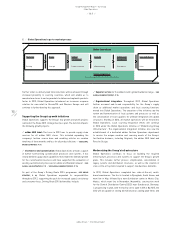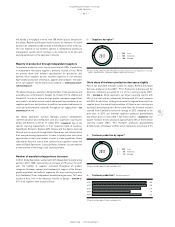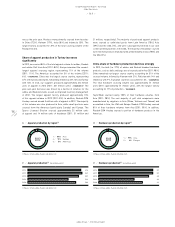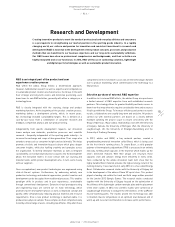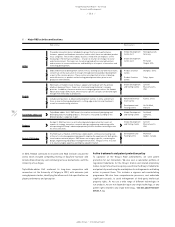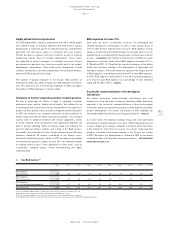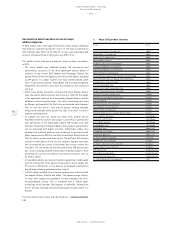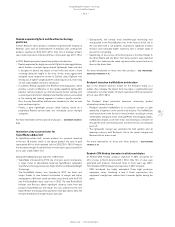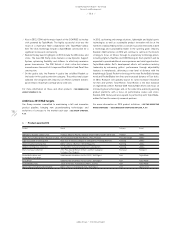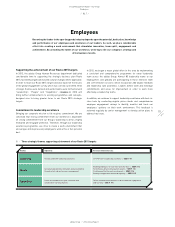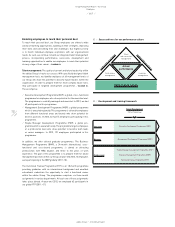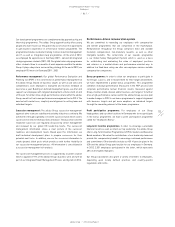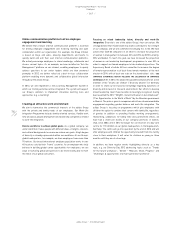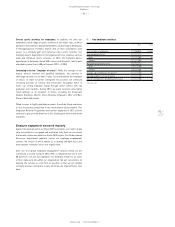Reebok 2012 Annual Report Download - page 127
Download and view the complete annual report
Please find page 127 of the 2012 Reebok annual report below. You can navigate through the pages in the report by either clicking on the pages listed below, or by using the keyword search tool below to find specific information within the annual report.
6
adidas Group
/
2012 Annual Report
Group Management Report – Our Group
105
2012
Research and Development
/
02.6
/
Research and Development
Creating innovative products to meet the needs of professional and everyday athletes and consumers
is a prerequisite to strengthening our market position in the sporting goods industry. In a rapidly
changing world, our culture and passion for innovation and consistent investment in research and
development (R&D) is essential to the development of new product concepts, processes and production
methods that are beneficial to our business objectives and our long-term sustainability ambitions.
Our R&D teams have diverse professional competencies and backgrounds, and their activities are
highly integrated and cross-functional. In 2013, R&D will focus on cushioning solutions, lightweight
and digital sports technologies as well as sustainable product innovation.
R&D is an integral part of the product and user
experience creation process
R&D within the adidas Group follows a decentralised approach.
However, fundamental research as well as expertise and competencies
in sustainable product creation are shared across the Group. In line with
their strategic and long-term visions and distinctive positioning, each
brand runs its own R&D activities, generally with either a category or a
technology focus.
R&D is closely integrated with the sourcing, design and product
marketing functions. At the beginning of the product creation process,
marketing defines a development priority, which, in recent years,
has increasingly included sustainability targets. This is derived on a
case-by-case basis from a combination of consumer research and
feedback, competition analysis and own product testing.
Independently from specific development requests, our innovation
teams analyse new materials, production processes and scientific
research – frequently independent of the sporting goods industry – to
increase the exchange and scope of idea generation. Their scope also
extends to areas such as consumer insights and social media. This helps
promote a holistic and innovation-focused culture which gives deeper
consumer insights, while also fuelling creativity and synergies across
the organisation. To identify innovative materials as well as integrate
sustainability, cost and production process aspects into the development
phase, the innovation team is in close contact with our sourcing and
material teams within product development who, in turn, work closely
with our suppliers.
Once conceptualised, new product technologies are engineered using
state-of-the-art systems. Furthermore, by embracing entirely new
production technology and material approaches, product creation and
development can be decoupled from traditional processes. This enables
paradigm shifts in products and in user experiences, unattainable
through conventional development. Extensive virtual prototype testing
and engineering loops are carried out on every technology, which
promotes faster development phases as well as improved concept and
quality, while simultaneously reducing physical material and resource
requirements. Once a new product technology is deemed viable, it is
produced as a physical sample. These samples are then comprehensively
tested by a broad range of users, including top athletes. Only when these
comprehensive tests have been successful are the technologies handed
over to product marketing, which commercialises the technology to a
final product.
Selective purchase of external R&D expertise
In addition to its internal R&D efforts, the adidas Group also purchases
a limited amount of R&D expertise from well-established research
partners. This strategy allows for greater flexibility and faster access to
know-how that may otherwise require considerable time and resources
if built up within the Group. To increase efficiency and protect research
results, collaborations are usually long-term and exclusive. All projects
carried out with external partners are based on a clearly defined
mandate outlining the project scope to ensure consistency with the
Group’s R&D focus. Major adidas relationships exist with the University
of Calgary, Canada, the University of Michigan, USA, the University of
Loughborough, UK, the University of Erlangen-Nuremberg and the
University of Freiburg, Germany.
In 2012, adidas and BASF, a key material partner, created a
groundbreaking material innovation called Boost, which is being used
for the first time in running shoes. To create Boost, a solid granular
polymer of thermoplastic polyurethane (TPU) is processed in an entirely
new way, forming small capsules in the material which makes up the
shoe’s distinctive midsole. With their unique cell structure, these
capsules store and unleash energy more efficiently in every stride.
Tests conducted by the adidas innovation team (ait.) show that the
highly durable Boost material provides the highest energy return in the
running industry. It was launched in early 2013 in a shoe called Energy
Boost. Collaborative research studies with the University of Calgary led
to the development of the adizero Prime SP sprint shoe. This product
played a leading role within the track and field range adidas provided
for the London 2012 Olympic Games. The research studies conducted
together with the University of Calgary focused on the optimisation of
the stiffness of the lightweight carbon nanotube plate and the placement
of the shoe’s spikes. In 2012, two scientific studies were carried out at
Loughborough University to evaluate the effectiveness of the adiPower
muscle-warming pants. The studies proved this technology was able
to maintain muscle temperature at an optimum level between end of
warm-up and race start and therefore to increase sprint performance.


